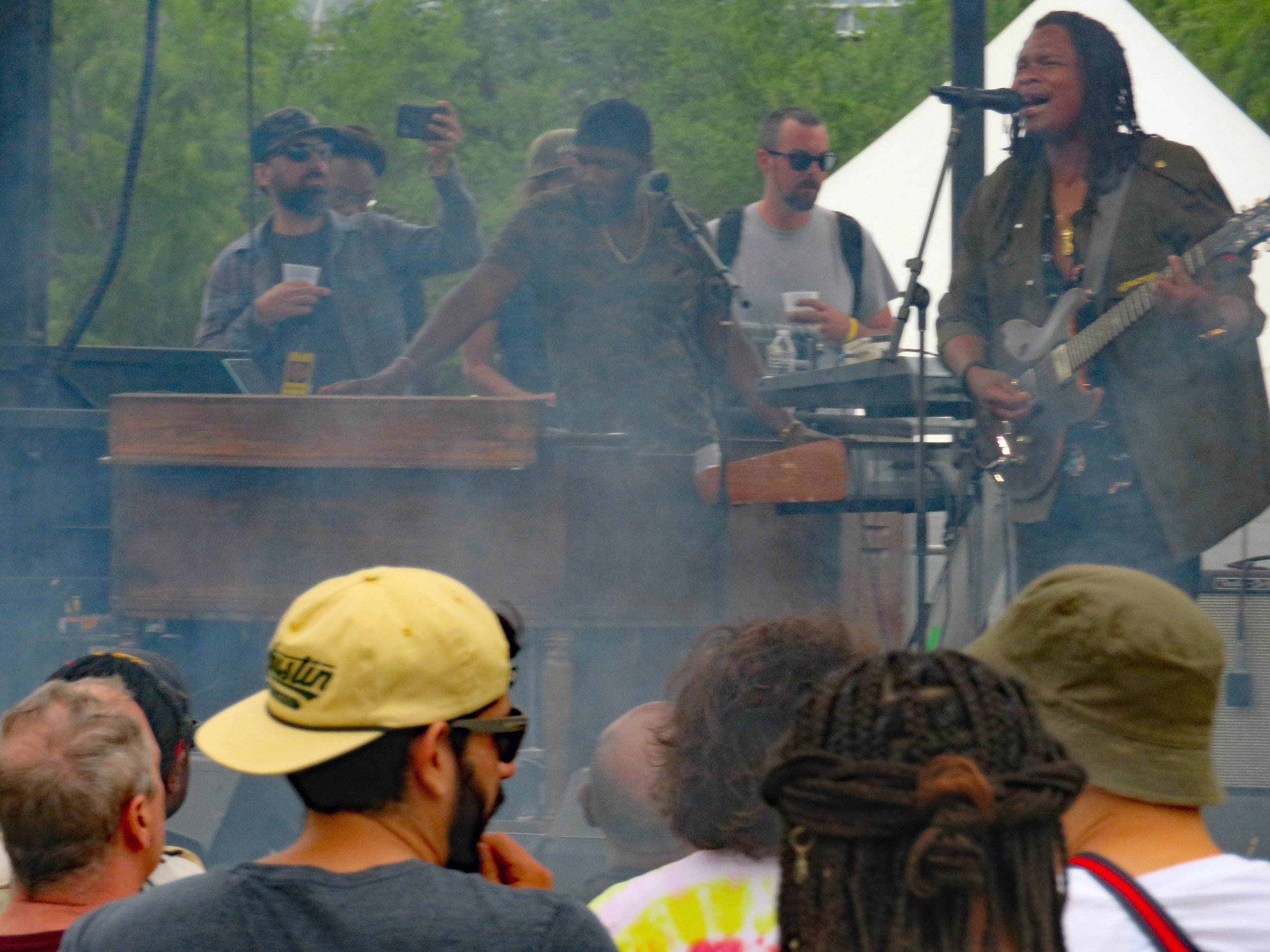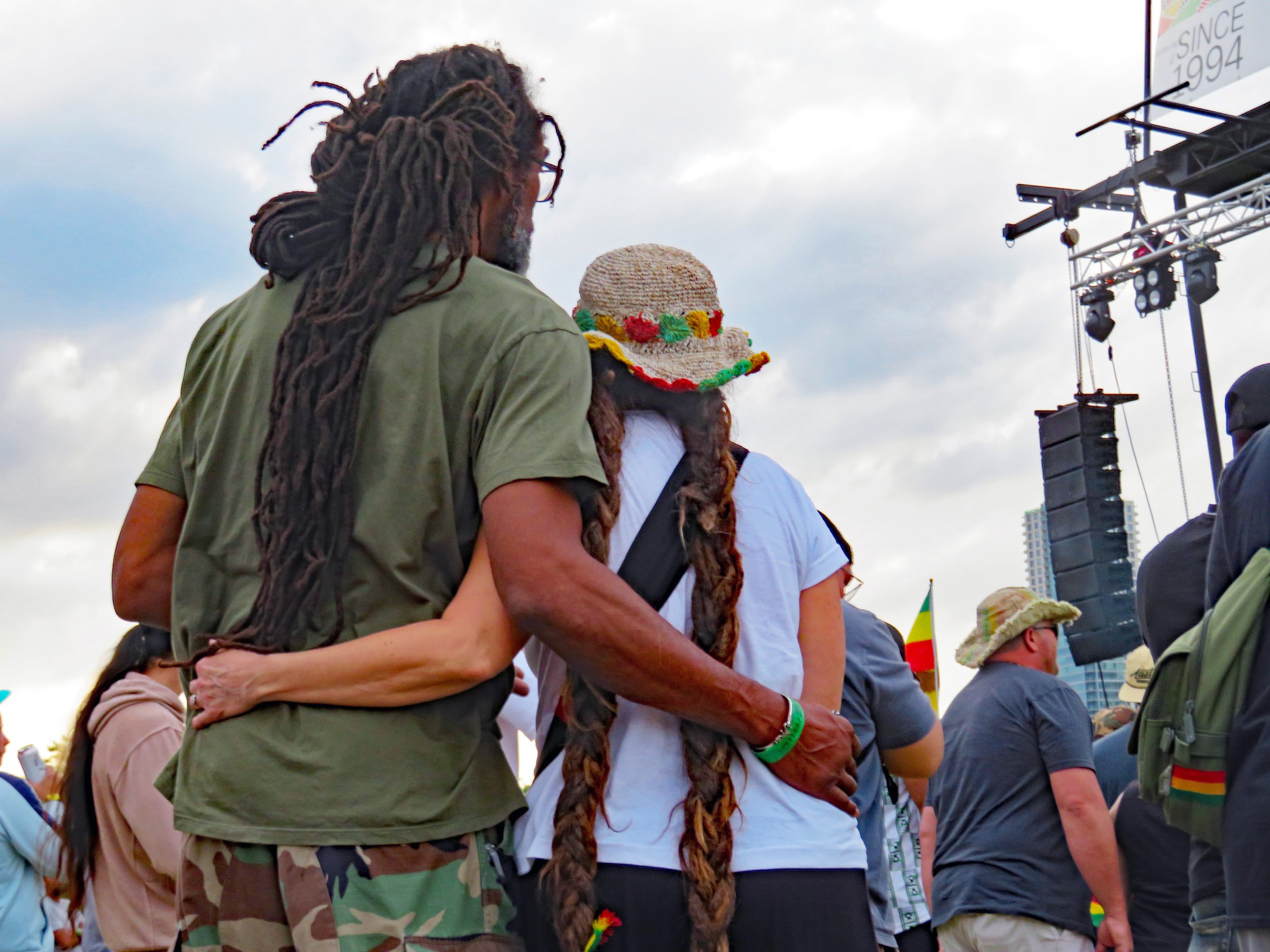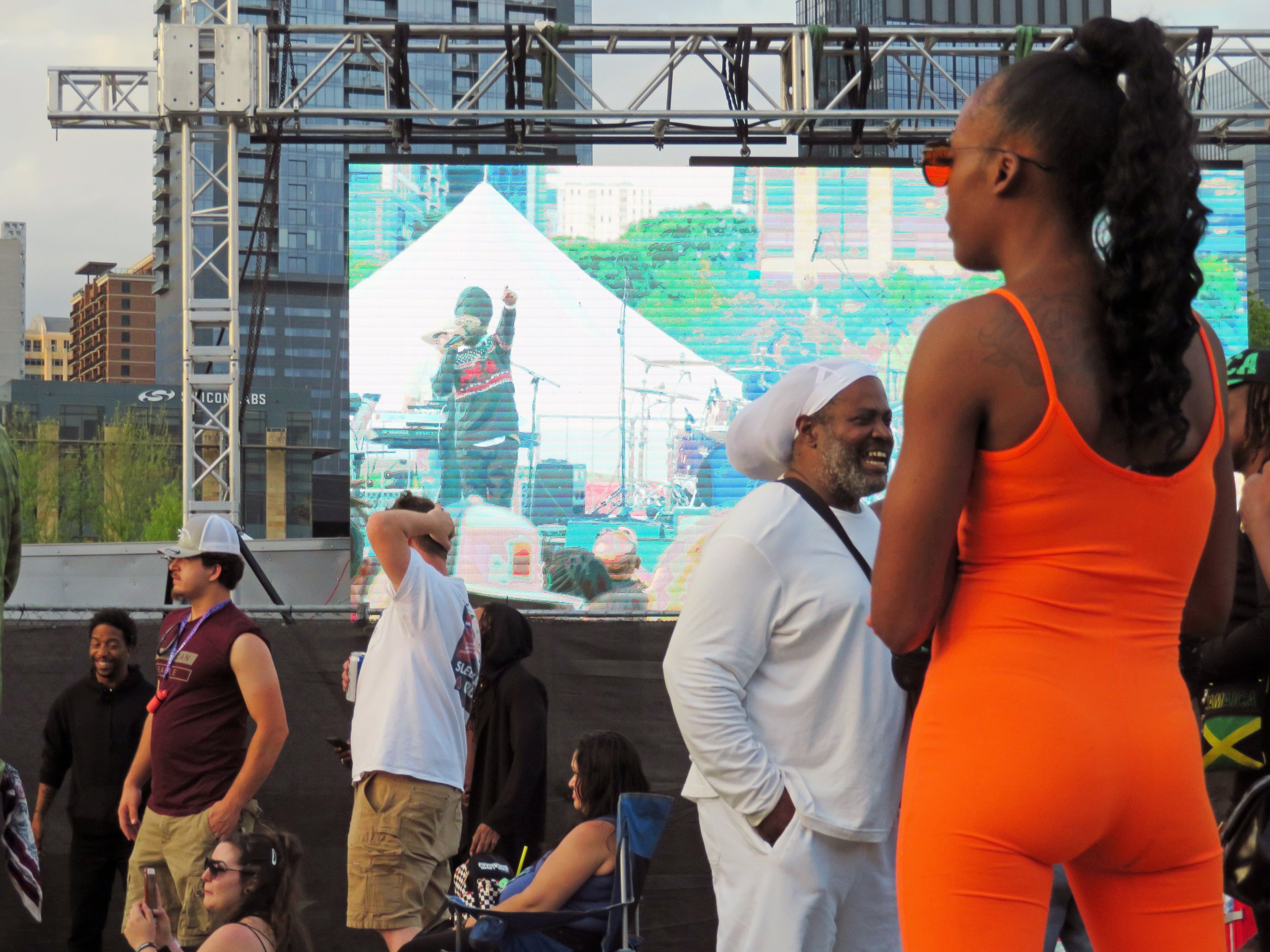One Love: it’s an expression Rastafarians first used to remember Jamaican political firebrand Marcus Garvey. His speeches always ended with the phrase and it became Garvey’s shorthand for the bonds of global unity he believed blacks needed to forge. One hundred years later, reggae and hip hop subcultures have popularized One Love to mean just this: goodbye. My inner hippie adores the phrase almost as much as the sweet, sweet Bob Marley song of the same name. The one that transformed an early black power phrase into one communicating universal respect and compassion for all people in all places.
I think of this phrase now in the afterglow of my favorite every-few-years rite of spring: the Austin Reggae Festival. Since 1994, ARF has promoted contemporary reggae from North America and Jamaica and donated a portion of the proceeds from every ticket purchased to the Central Texas Food Bank. When CTFB president Sari Vatske took to the mike the Saturday I attended, she announced with not a little pride that in its twenty-nine years of existence, the Festival has collected one million dollars to combat hunger in Texas. The amount may seem infinitesimal when billions are the baseline in current conversations about money. But it’s still made a difference to thousands in a state not especially known for its willingness to help the poor and marginalized.
Kumar and the Original Fyah
The one-day pass I bought this year was special. ARF came back last year; and much as I wanted to go, I stayed home, too afraid that prolonged exposure would be the doom of a respiratory system I could not risk infecting. But it really was safer now. To mingle closely with others, touch them, hug them, was no longer a game of Russian roulette. Not with vaccines and I was quintuple vaxxed. I’d proven that much to myself going to Seattle, the American COVID ground zero, a month before and coming home virus-free.
All of this I knew despite my anxiety threatening otherwise. And I was eager, so eager to hear the slow and spacious backbeat-heavy grooves of reggae. To deep-inhale the earthy acrid smell of incense and the cannabis Jamaicans call herb or ganja. And move the body that cannot resist rhythms of any kind, cuddling my shoulders in the Rockaway, circle-cycling my arms in the Bogo, rolling my hips to floor in the Wine. Reggae dancehall moves like these were freeform, joyfully contravening every uptight, straight-backed lesson I ever learned in ballroom dancing.
My love of reggae started long before the sickness of this era—the 1980s, to be exact. A time that could almost pass for some distant gold age if you squint your eyes long enough and ignore things like a Ronald Reagan presidency and the Cold War. I am white and middle class so it’s no surprise I came to it via the (mostly) white British reggae band UB40 that sang about pop-sugar love. Then, as my need for meaning evolved, through Bob Marley, the mixed-race son of an English overseer whose crooning voice belied steely convictions about social injustice. Thanks to my graduate work in Caribbean studies, I explored the music of Marley’s band two mates Bunny Wailer, who used reggae to celebrate Rastafarianism, and Peter Tosh, who used it to proclaim that I am not a politician… only [one who] suffer[s] the consequences. Silver-tenored Jimmy Cliff, an artist I admired for his soulfulness, came after them. These musicians weren’t all things reggae. But they opened my mind to a sound, a culture and a way of life and that was enough.
I discovered ARF in 2015 when a crowd of dreadlocked people in Bob Marley t-shirts packed a bus I was riding. We’re going to the Marley Fest, they said. A year later I went, too. What better way to welcome the springs I loved with the reverence of a pagan than with festivities that included everything from light saber twirling to juggling and hula hooping? And enjoy the satisfaction of an event that celebrated Rasta culture’s veneration of herb? I later learned that the festival unofficially goes by the name 4/20 Fest to honor a group of high school students who met every day at 4:20PM to “smoke trees.” Every year MC Jah Ray shamelessly encourages patrons to eschew cigarettes in favor of the sacred herb. Go outside the grounds, though, and the protection ends. Yes, it’s Austin. But it’s also not the 60s or 70s and possession of any amount of cannabis is still punishable by fines and jail time.
This year marked my third return to the Festival. But I couldn’t just go. There’d been a devastating pandemic that had changed everything and I felt an urgent need to celebrate. A bright crown of flowers seemed the just the thing to do it. I watched experts on YouTube effortlessly make crowns in under twenty, very edited minutes and bought the wire and sticky florist tape they recommended. Then, on the day before the festival, I went to the market to buy roses, goldenrods and leaves that would sit on the frame I had yet to fashion.
Through the colors I chose—red, yellow, green—I paid homage to the Rastafarian community and to its Zion of Ethiopia. And through the crown itself to the Greco-Roman pagans who wore flowered headgear to religious festivals. The crown was the perfect thing to wear not just because it would let me honor One Love and the season of renewal. But also because it would allow me to proclaim victory—of the kind signified by laurel wreath crowns—over niggling anxieties about taking infected air into my lungs.
That victory didn’t come easily. The wire had a mind of its own and the tape tore like paper in my fumbling fingers. The project took more than two hours to do excluding the time it took to tape together and bend a proper circular frame. My living room was a green garden of a mess afterward, nothing like the immaculate work spaces I’d seen on YouTube.
But the result, imperfect as was, surprised me; so did the effect the crown had on those who saw it. Late in the afternoon of concert day, a pretty African girl with long braids saw me in the crowd and rushed over to me, mouth open. You’re so beautiful. She hadn’t seen the gray hair under the hat, the light-sensitive eyes hidden behind dark sunglasses, or the wilted flowers on a crown made of mistakes. Instead she’d seen me with the eyes of One Love that looked at intention and heart and ignored the rest.
The modern world makes us all aware of the vulnerability of being human every day we live. But feeling irie-good comes down to one thing: seeking where we are connected. Rastafarians know this; it’s why they often say I and I to mean “we.” And why the concept of One Love they adopted for themselves but that one reggae musician refined to include all people—is such a powerful tonic in this, our post-pandemic age of division and distrust.







